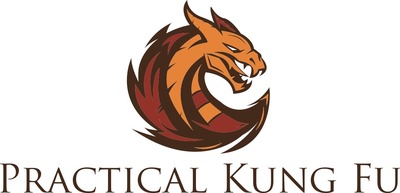 When I formally trained at a Kung Fu school over 15 years ago, after our beginner level training, we typically learned a new form (kata as it is known in Karate) about every six months.
When I formally trained at a Kung Fu school over 15 years ago, after our beginner level training, we typically learned a new form (kata as it is known in Karate) about every six months.
The first few forms were simply sequences of punches, blocks, kicks, etc.
After that, I learned a number of open hand and weapons forms.
What I vividly recall from my training back then was how anxious most students were to move on to the next form.
This is what I refer to as the “form trap.”
I see it all over the internet.
Kung Fu students and teachers love to post video of themselves performing some type of form. Most are doing the forms at high speed without any consideration of the movements they are actually performing.
Many practitioners who’ve studied the art for decades will learn dozens of forms.
The problem is this… most Kung Fu students never get a full understanding of the forms they are learning.
They just mindlessly go about the movements, learn a little application, and then salivate at the thought of learning a new form.
Purpose of Kung Fu forms
A form is a series of movements combining various striking, blocking and kicking techniques with footwork patterns.
Various Kung Fu styles can be distinguished by the forms practiced by their teachers and students.
The purpose of these forms is to train various movement patterns over and over again with the idea that if a student is faced with a fighting situation, they will react spontaneously.
After learning the movement patterns, students learn form applications and begin to train the form with partners.
Most of the movements within the form consist of a technique to avoid or block an attack and a follow up technique involving a counterstrike.
The idea is to practice with a partner over and over so that the student will react more instinctively if faced with an actual fighting situation.
In some schools, students are then encouraged to “go deeper” into the form to identify other potential uses of the movements, and to even add their own movements to the form.
The problem with Kung Fu forms training
Earlier I hinted at the primary issue with forms training.

Form Application Training
The vast majority of Kung Fu students never gain a thorough understanding of the forms they learn because they continually want to learn new forms.
Their idea is that by learning as many techniques as possible they will be able to handle any situation thrown at them.
Unfortunately, in the real world, this just doesn’t work for these reasons…
First, most students never practice the forms enough alone, let alone with partners, to make the form instinctive.
Second, when training with partners in a traditional school setting, the partners are always compliant, and the training is rarely conducted at full speed.
In other words, training in a traditional school rarely involves simulation of real life fighting.
Third, most students rarely develop the basic skills necessary to make the form techniques work in the first place.
The fact is, it requires thousands of repetitions to make a technique instinctive, and therefore, only the most serious, lifelong students of the art will ever reach that level.
The real benefit of Kung Fu forms training for most students
While few Kung Fu students will ever attain the proficiency described above, training Kung Fu forms is still quite valuable and beneficial.
When performed correctly and to the best of your ability, forms training can provide you with a nice workout for improving mobility and conditioning.
The key is to learn how to do the forms well in slow motion.
Focus on each movement… each stance, kick, block and strike. Perform each to the best of your ability.
As your technique improves, you can add speed to the movements, and this will give you an effective workout.
Just be sure that your form and technique is still strong when you pick up the speed.
Avoid the Kung Fu Form trap
I alluded to the form trap earlier.
It basically means that most students want to continue to learn more forms without really studying the forms they have already learned.
Learning more techniques will not make you more effective as a fighter.
The reality is, you only need to learn a few forms and practice them regularly. Study each of the movements and perfect those movements.
If you can ultimately learn how to perform a few strikes and kicks well, and learn how to move well, you can become an effective fighter.
Forms training can help you throw these strikes and kicks from different positions, and that can only be of benefit in the real world.
Final Thoughts
It’s been over 15 years since I trained formally in a school setting. I’ve continued to practice my forms since then, but not all of them.
For me, at my current age of 57, I find them to be most valuable for maintaining mobility and balance, and when I want to shake up my fitness training with a different type of workout.
Therefore, forms are integral part of the Practical Kung Fu program.
Thanks for reading!
Discover more from Practical Kung Fu
Subscribe to get the latest posts sent to your email.
